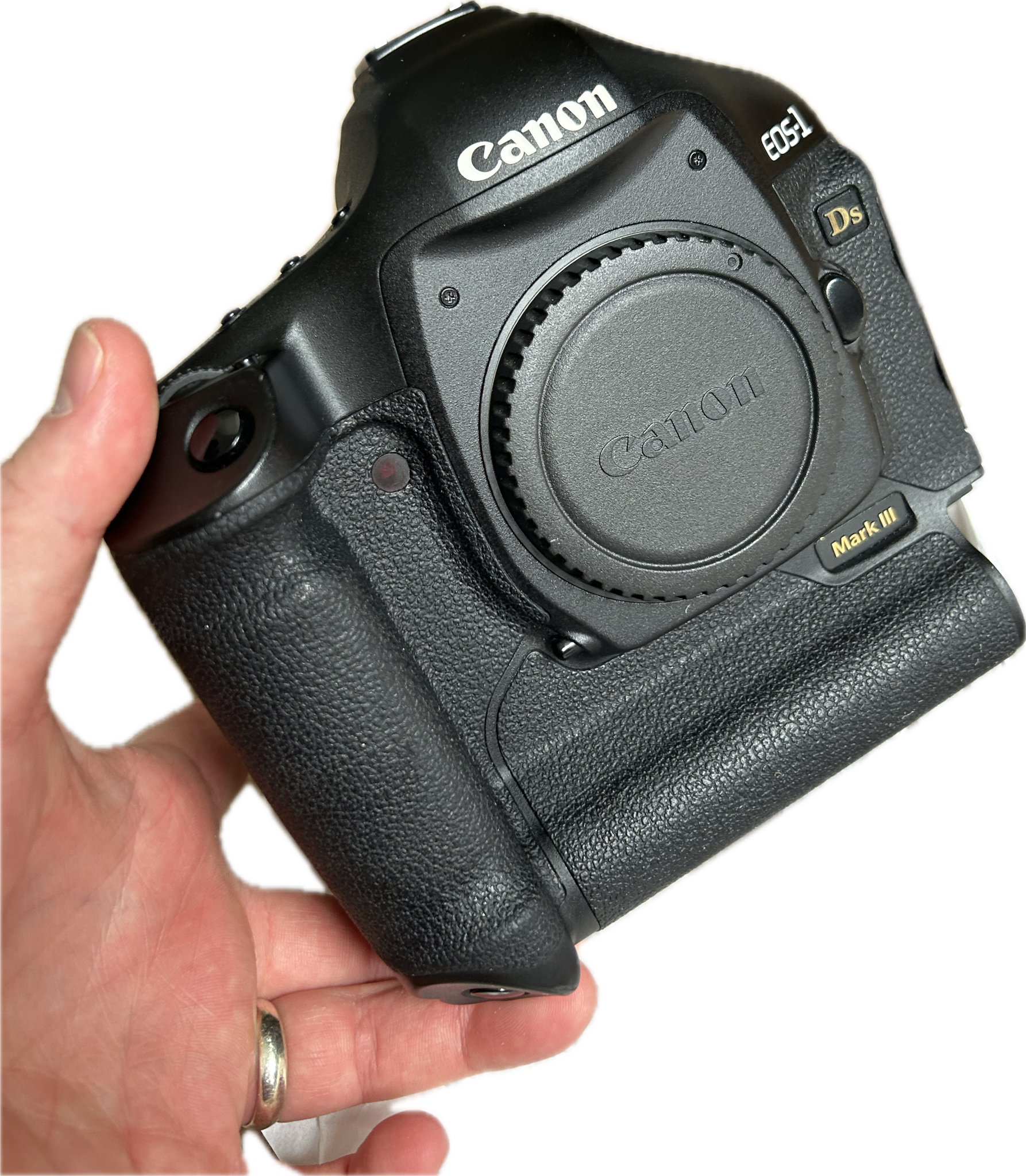The Camera
Ok so if you have googled “can I use the 1Ds III in 2023” or words to that effect, then you probably know what we are talking about, but if you don’t then here is a brief run down.
The 1Ds III was once the flagship full frame offering from Canon. It was announced mid to late-2007 and I think released, in the UK at least, early-2008 and subsequently discontinued in mid-2012 with the introduction of the Canon EOS-1D X. So assuming you find a final run of this camera is at least 11 year old and potentially as high as 15 years old.
With that said, why would you want a camera that old, well these are lots of reasons including the 1D range of camera being the flagship camera means they are built to last and to be worked hard, they also pioneer many of the features that end up filtering down to the “prosumer” and cheaper cameras. For example, it wasn’t until the 5D III that autofocus matched that of a non-1D camera, some 15 years later.
Pros/Cons
So what did I like and not like?
Well firstly the rumours are true it is built like a tank, it is so solid and feels great in the hand although not particularly light when paired with anything bigger than a 16-35mm. I do like the heft, it balances out the front weight of heavier glass but the total weight is a bit of a workout.
It of course has 2 card slot, before it was cool I might add, it is a bit of a pain to get SD cards that work with it, max 32GB and have to be SDHC cards rather than SDXC which are max 32GB capacity anyway, these are the ones I bought SanDisk Ultra 32GB SDHC. It was a bit annoying having one SD limited to 32GB but then the ability to have a 128GB CF card but either way 2 slots is always better.
I love that Canon completely committed to the 1D form factor of batteries. They are basically interchangeable from the 1Ds MKiii all the way up to the new EOS R3 albeit the battery technology within them has changed over the years. The newer chargers will charge all of the older batteries but the older chargers can’t charge the newer batteries to full capacity I believe. the camera can run all of the batteries though the older camera benefit from the newer batteries but the newer camera can lose capacity and shooting speed with older batteries.
One big thing is that ability to change almost every feature and setting from a button or combination of buttons and no need to dive into the menus, that is juts great and something i really look for in a camera, i like shooting cameras not computers.
Well that is going on a t-shirt “Shoot cameras, not computers”
One other thing I found when I was shooting the Eric Bibb concert in Edinburgh, from my last blog post, the ISO range and noise was a bit limiting in such a dark room, I found that the RAW files also lacked room to push/pull in low-light. The last concert I shot before that was all open air and even at night that isn’t an issue. Having said that I had also come from shooting an EOS R which has amazing low light capabilities.
Summary
It was an amazing camera to own and certainly one that was on my camera bucket list but I had a sensor problem with the one I bought and so I returned it after just one job. I loved it but swapped it for another icon of the 1D line up so stay tuned for another post about an impractical old camera a had to buy!
So should you buy one? Probably not, but if you like cool cameras that really are iconic, in so much that they pushed digital photography forward then maybe yes. I probably wouldn’t have one as my main camera for professional work and it is all a bit to big and heavy for “holiday snaps” but if you have passion projects and are already invested in Canon EF glass then get a low milage body and have a play, worst case sell it, you won’t lose money on it now they have definitely depreciated.


I still own mine and still use it although it’s dropped to 2nd backup status now alongside the 1d4 and the 1dx2.
Love the options to customise controls and the fact that I can set all three bodies to use the same layout.
Hi, thanks for commenting!
Yeah it is a great camera at the time I had the 1Ds MK3 and an original 1Dx and I was always amazed at how cross compatible they were. When you think how much modern consumer equipment is all about how to get you to buy more stuff the Canon “pro gear” feels like they are trying to keep you rather than getting you to move on!